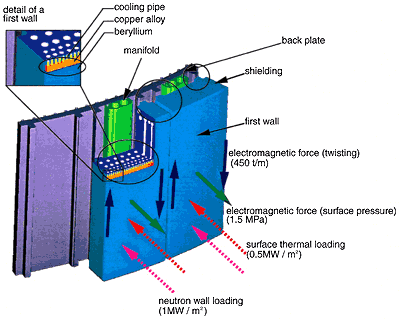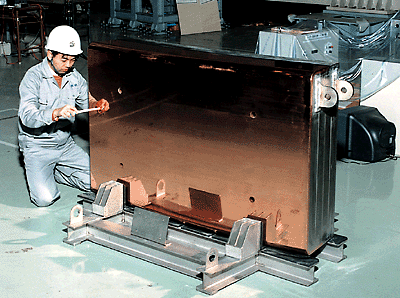| A blanket for a fusion reactor has to change the kinetic energy
of neutrons to a thermal level, and transport it out. The blanket
structure of ITER is shown in Fig. 2-19. A multi-layered structure
is formed, i.e. looking from the plasma side, aluminum forged
copper plates, cooling pipes made of stainless steel, stainless
steel blocks which have built-in cooling pipes and etc. These
layers are joined in one structural unit. High temperature Isotropic
Pressing (HIP) technology has been developed for this case, that
is, 1,000 degrees in temperature, 150 MPa in pressure applied
to this large size, complicated structure. The pressure of 150
MPa is about 1,500 times atmospheric pressure. However, there
is still a need for; optimization of the processing of materials,
a fully worked-out planning for a particular case, and a demonstration
of reliability. We made many endurance tests such as thermal cycle
fatigue tests and etc. It became clear that this HIP has a higher
quality than the usual welding and/or soldering (i.e. homogeneous
connection, strength equal to the substrate, a smaller deformation
and etc.). This technology is assumed to be the reference method
for the fabrication the ITER blanket. |

